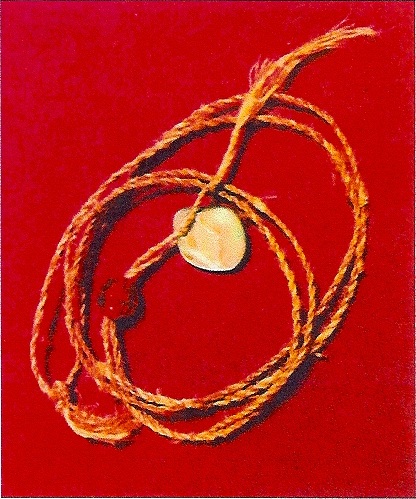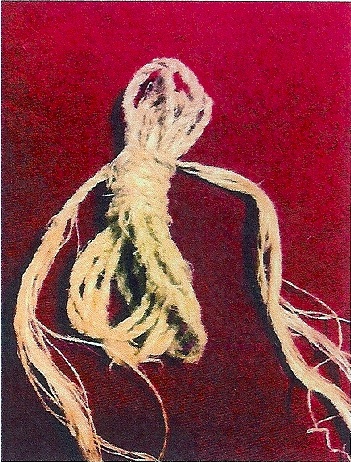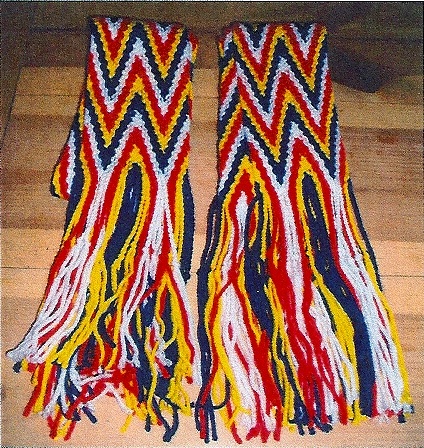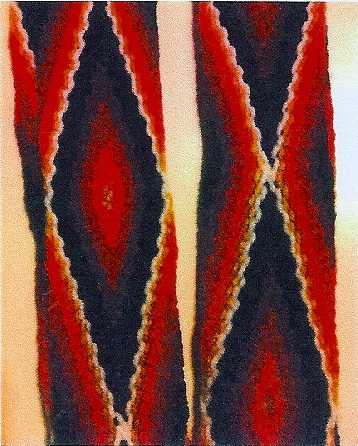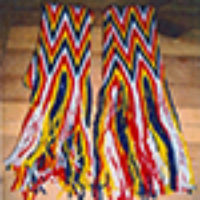
Mandy Marine
Western Mono Tumpline weaving
Fingerweaving is a traditional technology in which strands of plant fiber are spun into yarn and woven by hand into belts or tumplines (a strap used to suspend a pack/load from the top of the head). Woven together, the straps are very durable and strong. The process involved the extraction of fibers from milkweed, thistle, or dogbane plants. The fibers are then rolled into twine or yarn, and then woven by hand into a wide strap. As new materials were introduced, such as dyed wool and cotton yarn, Mono (the indigenous people of Central California) weavers adapted and this craft became an art form. Weavers are now able to use many different colors and various techniques to incorporate designs into their tumplines or belts.
Mandy Marine has been weaving since age 4 or 5; she was first taught to weave with yarn by her maternal grandmother, Juanita Anderson Dick. She quickly progressed from weaving with a wooden loom to weaving without a frame, to making milkweed yarn, to creating her own patterns. Mandy now teaches family members to weave and is a resource in her tribe for making cradleboard straps and belts worn during traditional dance circles.
Mandy was a master artist in ACTA’s Apprenticeship Program in 2012, with her sister and apprentice Carly Tex. During their apprenticeship, Mandy instructed her sister in the entire process of making a milkweed tumpline, from gathering to yarn-making to weaving. Approximately 100 feet of yarn was required for the single 4-foot tumpline.

